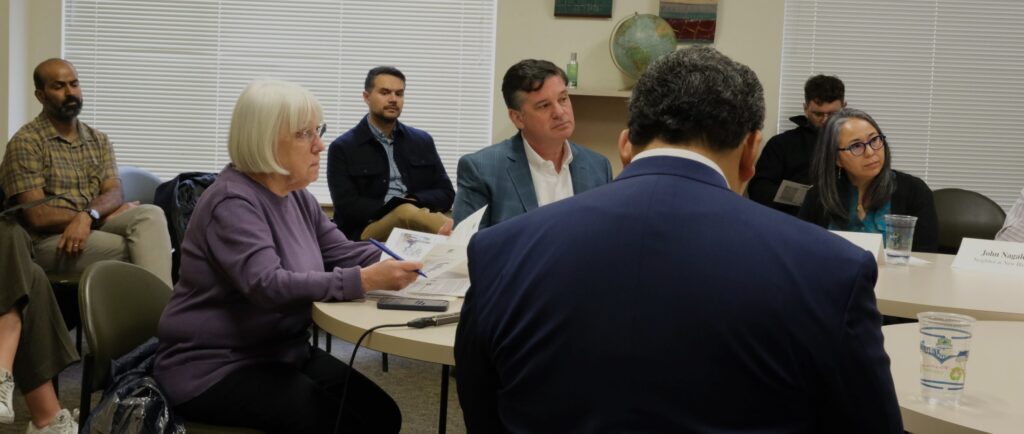Senator Murray Visits Bitter Lake
From Senator Patty Murray’s website.
Senator Murray discussed major Federal investments in Seattle’s pedestrian safety. On February 22nd U.S. Senator Patty Murray (D-WA), Chair of the Senate Appropriations Committee, visited the Bitter Lake Neighborhood to see how the $25.6 million grant she secured through the Safe Streets and Roads for All (SS4A) initiative will support pedestrian safety in Seattle. Senator Murray then hosted a roundtable with local elected officials and pedestrian safety advocates to discuss additional investments and infrastructure policy, including for the Aurora Avenue project.
Senator Murray was joined by Seattle Mayor Bruce Harrell; Brian Nielsen, NW Region Administrator at WSDOT; Greg Spotts, SDOT Director; Julie Taylor, Manager at New Haven Senior Living/The Cambridge; Tania Hino, Founder of Somos Mujeres Latina and member of Aurora Reimagined Coalition; and Laura Baumgartner, Pastor at Haller Lake United Methodist Church.
“Public safety cannot be an afterthought when it comes to urban planning. Whether you are walking, cycling, or rolling to your destination, our streets need to be safe for everyone,” said Senator Murray. “That is why I fought so hard to include funding for the Safe Streets and Roads for All program when we were passing the Bipartisan Infrastructure Law, and why I helped secure nearly $26 million for the City of Seattle to implement low-cost, high-impact projects in underserved neighborhoods across the city.”
Last month, Senator Murray announced $25.6 million in funding for the City of Seattle to improve traffic safety in underserved neighborhoods across Seattle. The funding comes from SS4A through the Department of Transportation (DOT) and was established by the Bipartisan Infrastructure Law, which Senator Murray was a leader in passing. SS4a allocates $5 billion for projects across the country to prevent roadside collisions and death. The funding will support the City’s Vision Zero Plan to eliminate traffic deaths and serious injuries by 2030.
The City of Seattle will use the funding to implement low-cost, high impact projects in neighborhoods across the city, including Rainier Valley, Downtown, U District, SODO, and White Center. Specifically, the City plans to fund:
- new sidewalks;
- traffic calming tools like speed cushions;
- flashing beacons to help people cross the street;
- ADA curb ramps and curb bump-outs, and;
- protected bicycle lanes.

